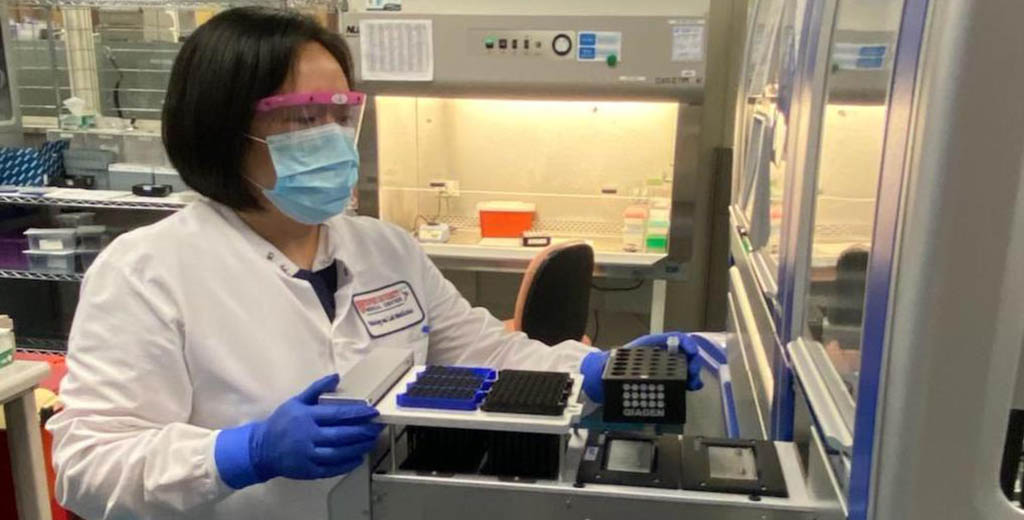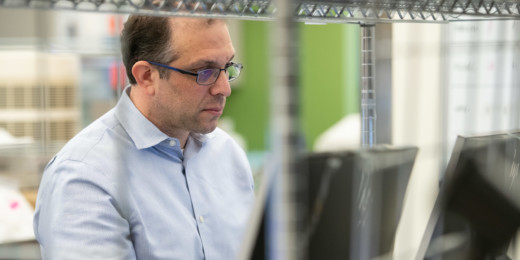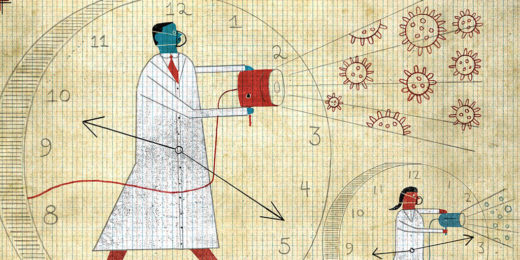Since March, when Stanford Medicine became one of the first academic medical centers in the country to develop a diagnostic test for the coronavirus, its laboratory scientists have faced a deluge.
In that time, the Stanford Clinical Virology Laboratory has processed more than 346,000 COVID-19 tests and more than doubled its workforce. Nearly 60 people -- and counting, as the lab is always hiring -- work around the clock, seven days a week, to process thousands of tests daily.
Decked out in masks, gloves and goggles, they work as quickly as they can in a lab filled with instruments, test tubes and computers to report the results of their tests.
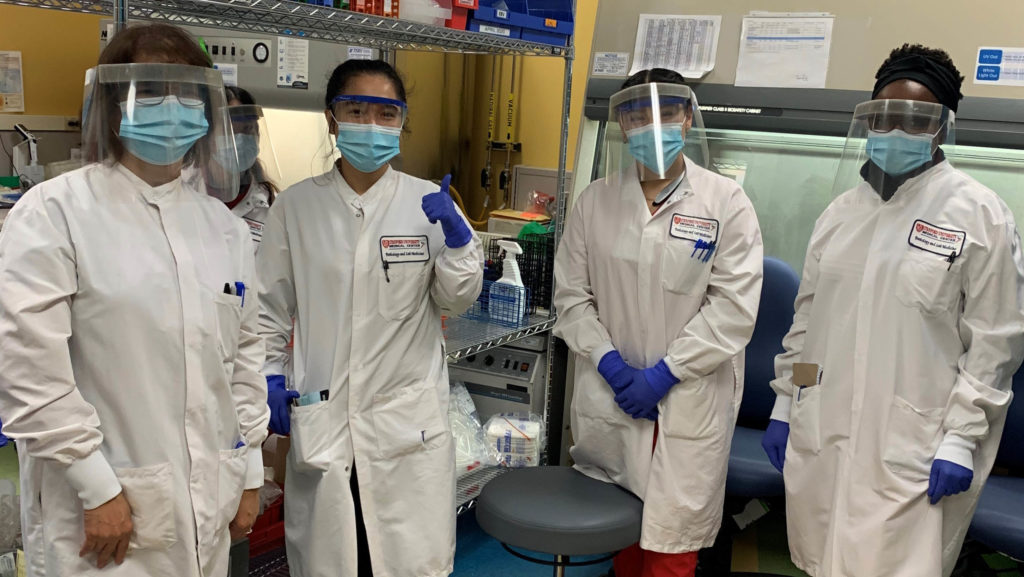
"It's been a life-changing, learning experience," Marilyn Mar, CLS, a senior clinical laboratory scientist, told me. "We've never been through anything like this, never grown so fast and learned so much in such a short period of time."
The COVID-19 samples never stop. At all hours, vans filled with containers of test swabs arrive at the lab, where lab assistants and technicians record each specimen into a computer system and sort by priority. Emergency patients are first. Then patients who are in the hospital or scheduled for a procedure. Then health care workers receiving routine checks.
The lab workers run the samples through a complex process that includes placing a small bit of the swabbed material into a tube, inserting the sample into a machine that's programmed to test for a pathogen (usually, these days, the coronavirus) and conducting a quality check. The machine records the results into the computer system.
Buoyed by their coworkers
Jennifer Fralick, administrative director for laboratory services, said work during the pandemic has been demanding, but the team has been up to the challenge: "People are really tired, but they're still working so hard. They're really a resilient bunch."
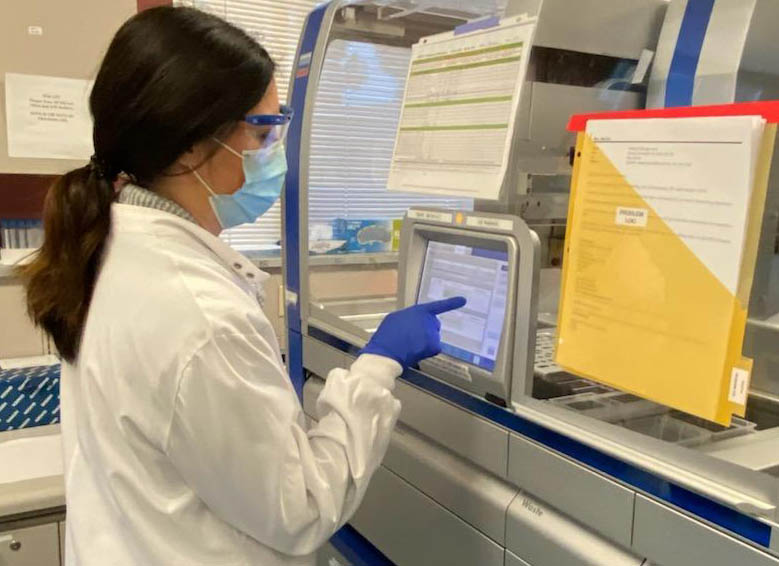
Image by Nina Valderrama
Despite the pressure and the long hours, the lab workers say they are buoyed by the support of their coworkers. "I've never worked anywhere where there's been such camaraderie," Naomi Iwai, MS, MLS (ASCP), clinical laboratory scientist, told me. "My coworkers lift me up and make me feel like I'm not alone."
Kenji Obadia, PhD, HCLD, manager of infectious disease testing, finds himself on the phone after logging 12-hour days, answering questions and solving problems. At the lab, though, he does his best to lighten the mood: "I try to make it fun, so we can all laugh and smile and not be tense all the time."
He also encourages the team to take a day off now and then to refresh.
On those rare days, Iwai heads to the beach to surf -- an activity that's outside and socially distanced, she notes. "I get out of doors as much as possible," she said.
Staying motivated
The workload isn't likely to let up anytime soon.
The number of COVID-19 samples the lab needs to process is growing, as infection rates are rising in the Bay Area, like elsewhere around the country. This week, Stanford plans to open a new lab, the Emerging Infectious Disease Lab, next door to the virology lab, with more equipment and robots to help with pipetting. With the two labs, they expect to handle 10,000 tests a day.
Lab workers say they stay motivated because they know how important their work is in taming the pandemic. If they quickly identify a COVID-19-positive patient, they can help prevent that person from spreading the virus.
They know, also, that the frantic pace will eventually slow.
"Someday, COVID is going to go away and we'll have our lives back," Obadia told me. "But for COVID to go away soon, we need to do our jobs now."
Top image of Marilyn Mar, senior clinical laboratory scientist in the Stanford Clinical Virology Laboratory, by Nina Valderrama.


